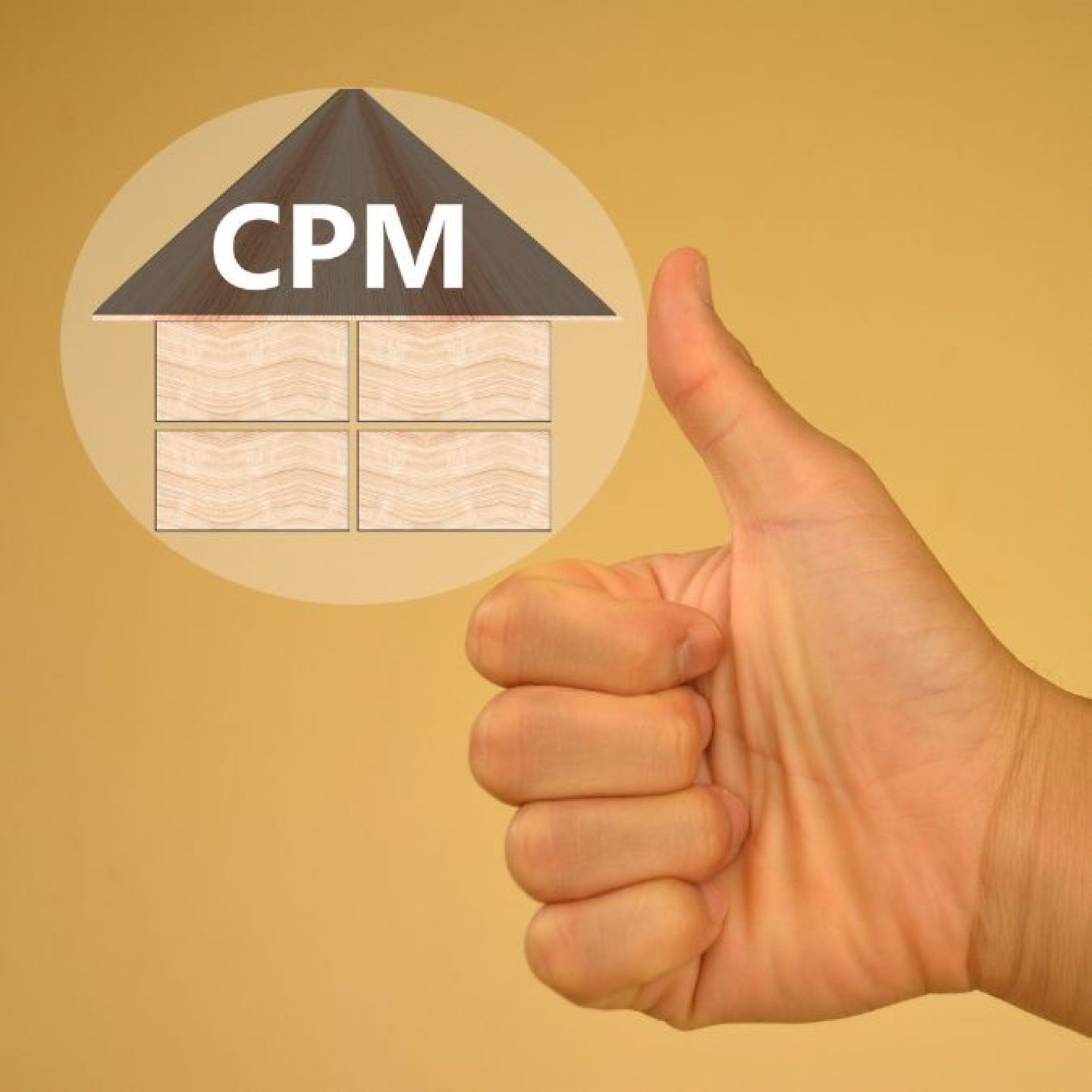
Our spy tools monitor millions of native ads from over 60+ countries and thousands of publishers.
Get StartedIn the advertising industry, eCPM (effective cost per mille) and CPM (cost per mille) are two important metrics.
Understanding these differences, as well as how they relate to other metrics like RPM, is crucial for app owners and publishers. Grasping how eCPM and CPM function can help you optimize ad performance and refine your revenue generation strategies. By focusing on these metrics, informed decisions can be made to enhance your overall monetization efforts.
Effective cost per mille (eCPM) is a crucial metric for publishers aiming to measure the effectiveness of their ad campaigns. It represents the revenue earned by a publisher for every 1,000 ad impressions.
To calculate eCPM, you use the formula:
[ \text{eCPM} = \left(\frac{\text{Total Earnings}}{\text{Total Impressions}}\right) \times 1000 ]
For example, if your total earnings from an ad campaign are $500 and the total number of impressions is 100,000, the eCPM would be:
[ \text{eCPM} = \left(\frac{500}{100,000}\right) \times 1000 = $5 ]
Understanding eCPM is essential for publishers as it provides valuable insights into their ad performance and monetization strategies. Here are some key reasons why eCPM is important:
By tracking eCPM, publishers can evaluate the overall performance of their ad inventory. This helps in identifying which ad campaigns or formats are most effective in generating revenue.
Understanding eCPM allows publishers to make informed decisions on optimizing ad placements, selecting appropriate formats, and targeting strategies. These insights can lead to better revenue generation and enhanced user experience.
eCPM serves as a benchmark for comparing different ad networks and campaigns. Higher eCPMs usually indicate more lucrative advertising deals and effective monetization strategies.
eCPM advertising is not just about maximizing impressions but ensuring those impressions translate into sustainable revenue. With accurate calculation and analysis, you can leverage this metric to fine-tune your monetization strategy effectively.
Cost per mille (CPM) is an important metric for advertisers. It represents the amount advertisers pay for every 1,000 impressions of their ads. This cost metric helps advertisers understand how much they need to spend to reach a specific audience size.
The CPM formula is straightforward:
[ \text{CPM} = \left( \frac{\text{Total Cost of Campaign}}{\text{Total Impressions}} \right) \times 1000 ]
For example, if an ad campaign costs $500 and generates 100,000 impressions, the CPM would be calculated as:
[ \text{CPM} = \left( \frac{500}{100,000} \right) \times 1000 = $5 ]
CPM plays a vital role in managing advertising budgets. By understanding the cost per mille, advertisers can:
Advertisers rely on CPM to ensure their campaigns are cost-effective and achieve the desired reach without overspending. For instance, leveraging resources like Anstrex, which allows advertisers to spy on profitable native ads, can significantly enhance their ability to build winning native advertising campaigns and get more for their advertising spend.
Understanding the differences between eCPM and CPM is crucial for both publishers and advertisers. Each metric serves a specific purpose and offers unique insights into ad performance.
eCPM focuses on revenue generation. It helps publishers measure the effectiveness of their ad inventory by evaluating the revenue earned per 1,000 impressions. This metric is essential for understanding how well different ad placements and formats are performing.
CPM is all about cost management. Advertisers use this metric to determine how much they are spending for every 1,000 impressions their ads receive. It helps in budgeting and ensuring that advertising campaigns are cost-effective.
A common misconception is that a high CPM automatically translates to high revenue for publishers. Here’s why this isn't necessarily true:
For app owners and publishers, focusing on optimizing eCPMs can be crucial in several scenarios:
Conversely, app owners might prioritize negotiating higher CPMs under these circumstances:
Balancing both metrics—eCPM and CPM—based on your specific monetization objectives will lead to more informed decision-making and optimized ad performance.
Improving ad revenue through eCPM strategies is essential for publishers seeking to maximize their earnings. By leveraging eCPM insights, publishers can make informed decisions on ad placements, formats, and targeting strategies to enhance their overall revenue generation.
Publishers utilize eCPM metrics to:
Understanding how users interact with ads is crucial when evaluating monetization approaches. High audience engagement often leads to:
Real-world examples highlight the effectiveness of various eCPM optimization techniques:
By conducting A/B tests, publishers can compare different ad placements and formats to determine which configurations result in the highest eCPM. For instance:
Case Study: An app developer tested two different placements for interstitial ads—one after completing a level and another during a pause screen. The test revealed that ads shown during the pause screen had a 20% higher eCPM due to better user engagement.
Utilizing mediation platforms helps publishers manage multiple ad networks and optimize earnings by selecting the highest-paying ads in real-time.
Case Study: A gaming app integrated a mediation platform that dynamically selected ads from various networks based on their performance. This strategy led to a 30% increase in overall eCPM by ensuring only the most lucrative ads were displayed.
These examples underscore the importance of continuous testing and optimization. Publishers who regularly analyze and adjust their strategies based on eCPM insights can significantly improve their monetization outcomes.
Different ad placements within an app can significantly affect its resulting eCPM rates. The location of an ad within your app determines how users interact with it, ultimately influencing engagement levels and revenue generation.
Finding the right balance between user experience and monetization potential is crucial. Overloading an app with too many ads or intrusive formats can lead to negative user experiences and ultimately decrease overall ad performance.
Different ad formats can have varied impacts on driving higher or lower effective cost per mille values for publishers. Understanding these differences allows you to optimize your ad strategy effectively.
Each ad format offers distinct advantages and challenges. By experimenting with different combinations and analyzing their outcomes, you can identify which formats deliver the best results for your specific audience and app environment.
Understanding eCPM and CPM is crucial, but mastering their calculation ensures you make data-driven decisions. Here's how to accurately calculate eCPM using real data:
Misinterpreting eCPM can lead to ineffective strategies. Here are common pitfalls to watch for:
Beyond eCPM and CPM, consider integrating additional performance metrics:
By evaluating a combination of these metrics, you gain a comprehensive understanding of your ad performance, enabling more informed optimization strategies.
A balanced approach combining short-term observations with long-term analysis will yield the best results for maximizing revenue potential while maintaining a positive user experience.
Understanding what constitutes high versus low eCPM rates is essential for app publishers aiming to optimize their revenue strategies. High eCPM rates typically indicate that ad placements and formats are effectively engaging the audience, leading to better revenue generation. Conversely, low eCPM rates may signal underperforming campaigns that need adjustment.
To get a comprehensive view of campaign effectiveness, monitor KPIs such as:
Several tools can help in measuring these metrics:
Effectively managing these metrics alongside eCPM and CPM figures allows app publishers to make informed decisions that enhance overall campaign performance.
Understanding what is eCPM and how it is different from CPM is very important in the constantly changing world of programmatic advertising. These metrics are crucial for creating successful user acquisition strategies for mobile apps.
Both metrics are important but serve different purposes. Publishers use eCPM to improve ad placements and formats, while advertisers use CPM to ensure cost-effective campaigns. Understanding the differences between these metrics helps app owners and publishers improve their monetization strategies and achieve sustainable growth in their advertising efforts.
One effective way to maximize revenue, particularly when considering eCPM, is by strategically timing the display of popup ads. Popup advertising is a powerful tool in digital marketing, known for its ability to drive conversions. Understanding the best time to display popup ads can lead to significant improvements in ad performance and revenue generation.
Receive top converting landing pages in your inbox every week from us.
How-To
Native ads can do more than drive clicks—they can build long-term brand loyalty. Learn how to use authentic storytelling, strategic placement, and audience targeting to strengthen trust during year-end campaigns. Discover how subtle, value-driven messaging keeps customers engaged beyond the holidays. Ideal for marketers aiming to turn seasonal buyers into loyal brand advocates.
Marcus Chen
7 minDec 15, 2025
Must Read
As third-party cookies fade away, contextual targeting is making a powerful comeback. Learn how to leverage native ads that align with user intent and content relevance to maintain high engagement and conversions. Discover modern tools and tactics that make cookie-free targeting both precise and scalable. Ideal for advertisers seeking privacy-friendly ways to drive performance in 2025 and beyond.
Liam O’Connor
7 minDec 9, 2025
Recently Updated
Native ads can make or break your holiday marketing success. Explore how to evaluate your recent campaigns and identify what worked—or what fell short—with native advertising. Learn key optimization tactics to boost engagement, strengthen audience trust, and increase conversions in future promotions. Ideal for marketers aiming to refine their ad strategies after the holiday rush.
Elena Morales
7 minDec 1, 2025




